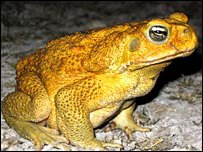 The debate continues on whether Tyrannosaurus rex was a mainly a predator or a scavenger.
The debate continues on whether Tyrannosaurus rex was a mainly a predator or a scavenger.
Dr Lawrence Witmer, from Ohio University, used the medical scanning technique of computed tomography (CT scanning) to reconstruct the shape of the animal's brain, including its inner ear, which is involved not only in hearing but also balance.
The structure of its inner ear suggests it had excellent hearing and balance.
"The inner ear provides very important clues about behaviour," said Dr Witmer. "It talks of relative types of movement; for example, how agile they were.
"T. rex has the inner ear of a much smaller, very agile animal. It had a heightened sense of equilibrium and balance.
"But there's evidence it went beyond that, that it emphasised that."
The Ohio researcher said the T. rex also employed rapid turning movements of its eyes and head to track its prey.
It seems every year we learn something new about the "King of Dinosaurs"
